- 1630 Connecticut Ave, NW, Suite 500, Washington D.C. 20009
- 202.232.6749
- 202.232.6750
- [email protected]
Menu
The HealthHIV National HIV E-Learning Training Center develops and implements e-learning training to build the knowledge, skills and competencies of HIV prevention staff working in high-impact HIV prevention (HIP) programs across the U.S. The Center offers accessible, Section 508-compliant services and materials via asynchronous learning opportunities (self-paced e-learning, instructional videos, online resources), and blended learning opportunities (combining synchronous and asynchronous modalities.
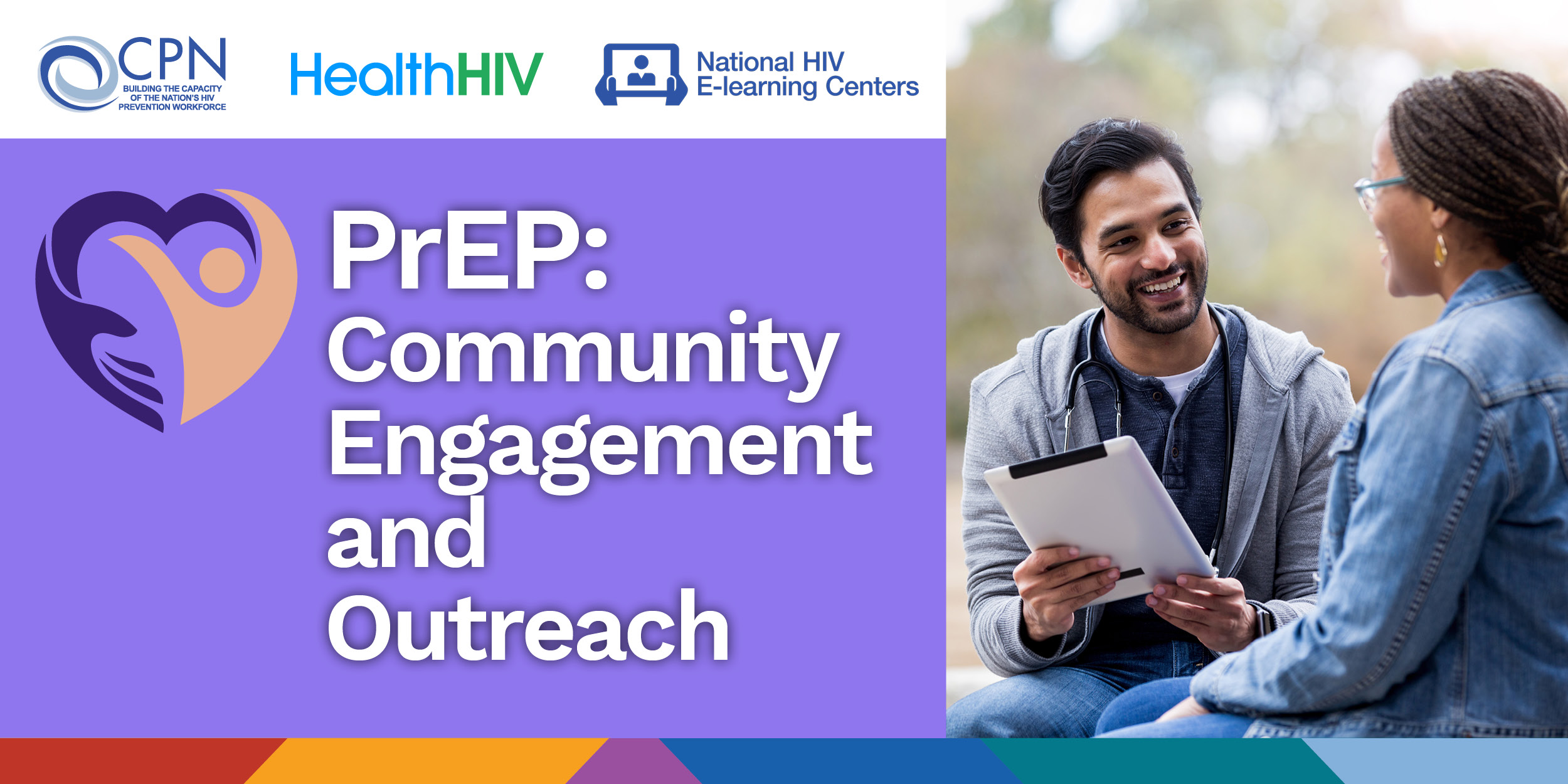
Want to get your community engaged and excited about PrEP? Wondering how you can extend the reach of your PrEP program? Take HealthHIV’s new e-learning course, “PrEP: Community Engagement and Outreach!”
Participants will gain valuable skills on conducting community outreach and getting people excited about PrEP. Participants also will reflect on how to use the covered tools and resources in their own organizations and with their own clients. This course prepares participants for beginning their work as PrEP educators and outreach workers as well as serve as a refresher for experienced professionals.
Learning Objectives
By the end of this course, learners will be able to:

Safe in the City is an HIV and STI prevention intervention designed for patients in STI clinic waiting rooms, developed through HealthHIV’s National HIV E-Learning Training Center which is part of the Capacity Building Assistance for High-Impact HIV Prevention Program Integration. This 30-minute, video-based intervention aims to increase condom use and other safer sex behaviors in order to reduce infections among patients who view the video. In addition to the video, supplemental materials are provided to promote the intervention and to provide safer sex information for clients.
Safe in the City can be easily integrated into the clinic waiting room, requires very little staff time to set up with no disruption to clinic flow, and requires no counseling or small-group facilitation.
The Capacity Building Assistance Provider Network (CPN) National HIV Classroom and eLearning Centers offers this course through funding from Centers for Disease Control and Prevention (CDC).
Essential Elements
The essential elements of this video are to:

A Salvo en la Ciudad una intervención de prevención del VIH y las ITS diseñada para los pacientes de las salas de espera de las clínicas de ITS. Esta es una intervención de 30 minutos basada en un vídeo cuyo objetivo es aumentar el uso del condón y otros comportamientos sexuales más seguros para reducir las infecciones entre los pacientes que ven el vídeo. Además del vídeo, se proporciona material suplementario para promover la intervención y ofrecer información sobre sexo más seguro a los clientes.
A Salvo en la Ciudad puede integrarse fácilmente en la sala de espera de la clínica, requiere muy poco tiempo de preparación por parte del personal, no interrumpe el proceso de la clínica y no requiere consejería ni facilitación de grupos pequeños.
El Aula Nacional de VIH y los Centros de aprendizaje electrónico de la Red de Proveedores de Asistencia para el Desarrollo de Capacidades (CPN) ofrecen este curso gracias al financiamiento de los Centros para el Control y la Prevención de Enfermedades (CDC).
Elementos Esenciales
Los elementos esenciales de este vídeo son:
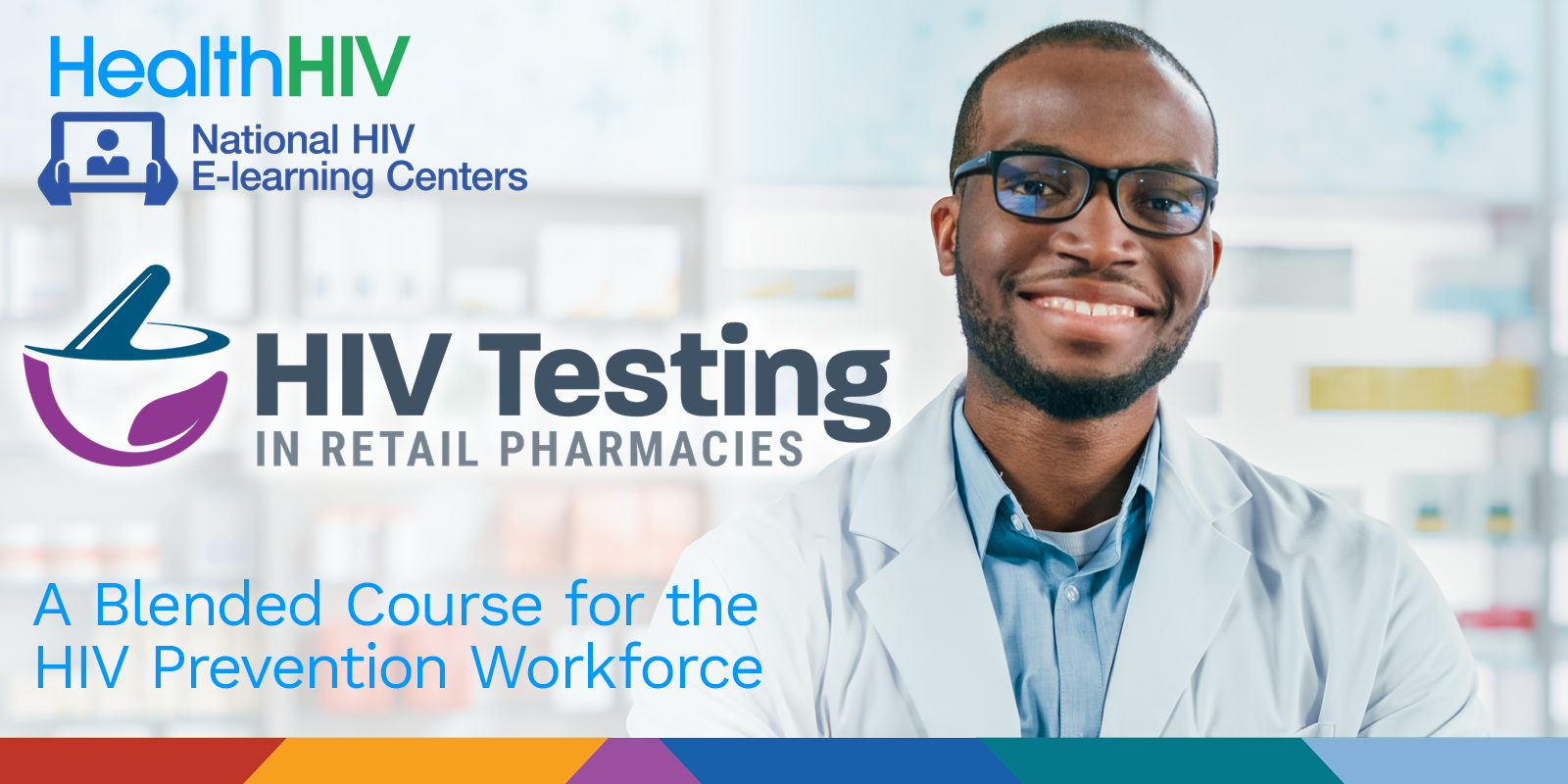
The HIV Testing in Retail Pharmacies course includes an hour-long eLearning pre-course and a 5-hour virtual instructor-led training created by HealthHIV and Cicatelli Associates Inc.
This course is designed for pharmacy staff who wish to develop the skills necessary to conduct a complete HIV testing session with retail pharmacy patients. Learners will be introduced to the CDC’s Six-Step HIV Testing Protocol and will review considerations for implementing it in pharmacy settings.
Pharmacists, providers, and pharmacy staff are trusted members of their communities and often provide guidance to clients and consumers that is not only related to pharmaceutical treatment, but also for disease management and risk factors.
Learners are invited to take full advantage of this course and should find this experience both educational and enjoyable. Continuing education is available.
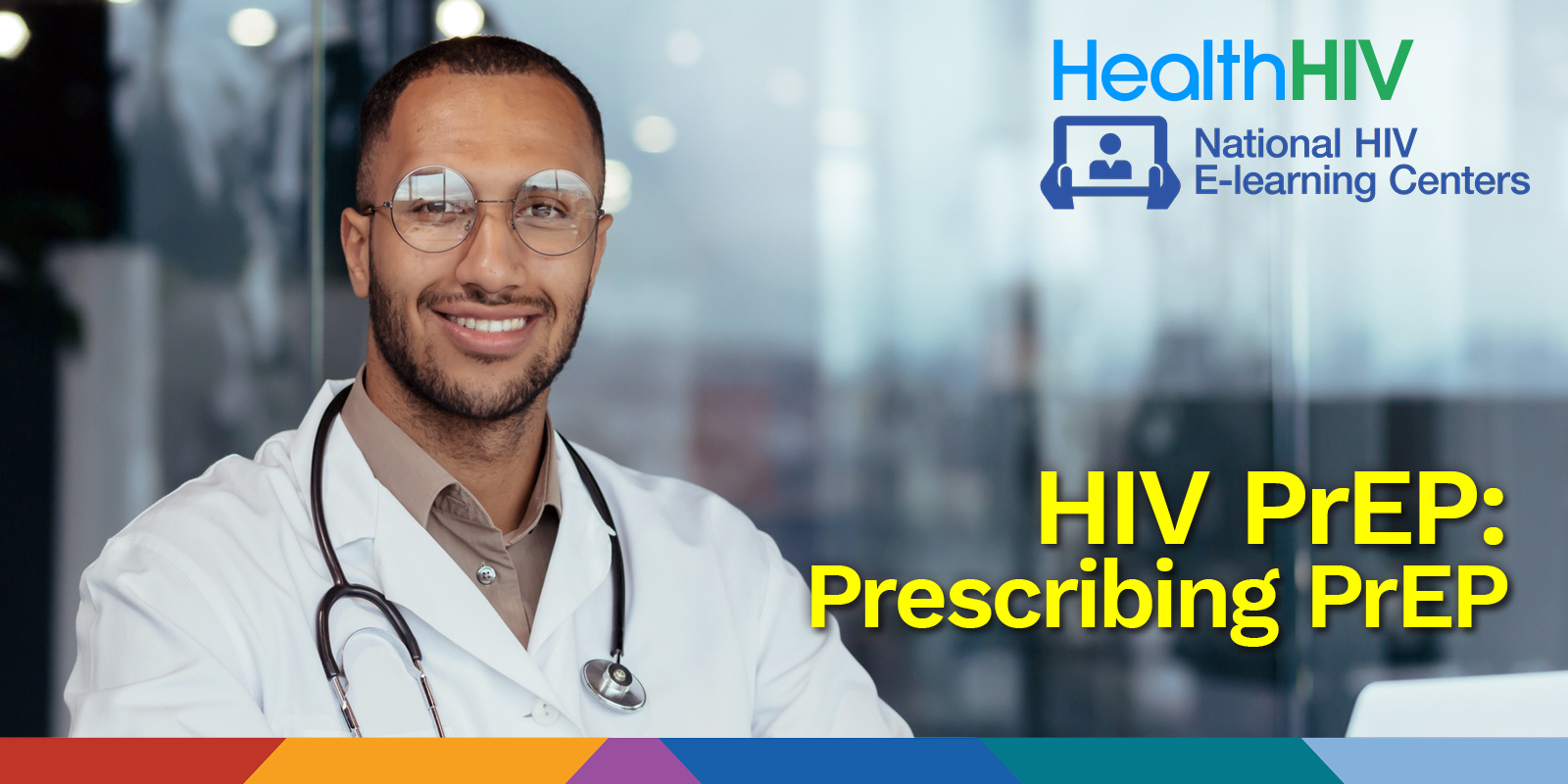
Informed by CDC’s PrEP Guidelines, this course was created to assist prescribers, clinical support, and non-clinical staff with the basics for prescribing and monitoring PrEP and for incorporating PrEP services into their practices or local HIV prevention programs. Participants will gain and apply knowledge to case scenarios that address and support a wide range of patients with diverse PrEP-related needs. Continuing education is available.

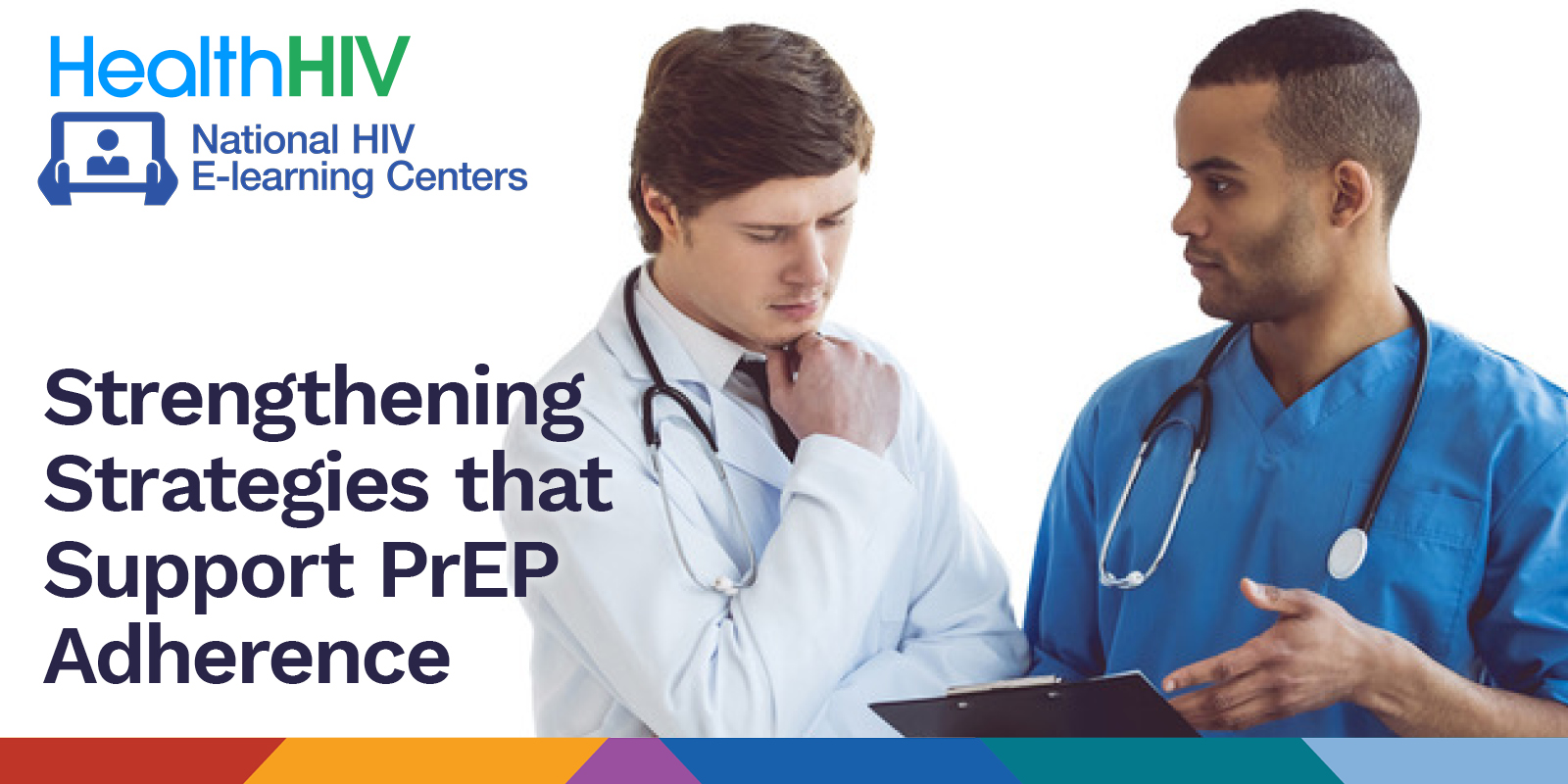
Ensuring continuous PrEP access for those at risk for HIV will help us end the HIV epidemic. HealthHIV announces a new self-paced e-learning course, Strengthening Strategies that Support PrEP Adherence. This course will help strengthen your knowledge and skills to identify and implement strategies that support PrEP adherence in your community.
This course helps health department staff and other public health professionals address barriers to adherence, monitor PrEP adherence, and develop partnerships to support adherence. A core part of course content will involve interactive components that help learners develop an action plan tailored to their specific situation.
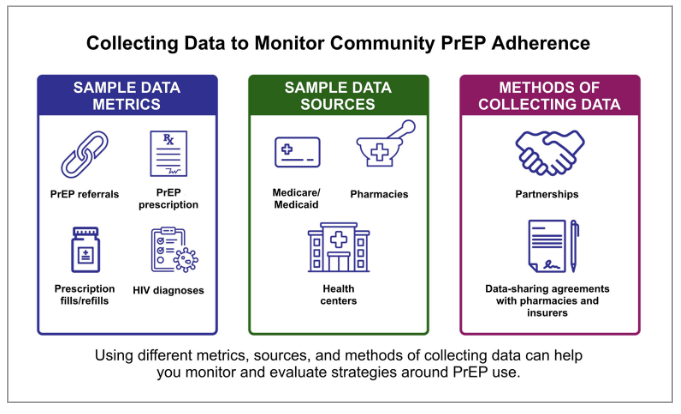
Intended Audiences
Health department staff and other non-clinical public health professionals in HIV prevention settings such as HIV prevention managers, care coordinators, case managers, PrEP navigators, health educators, disease intervention specialists, partner services specialists, community health workers, and other staff who provide PrEP adherence services.
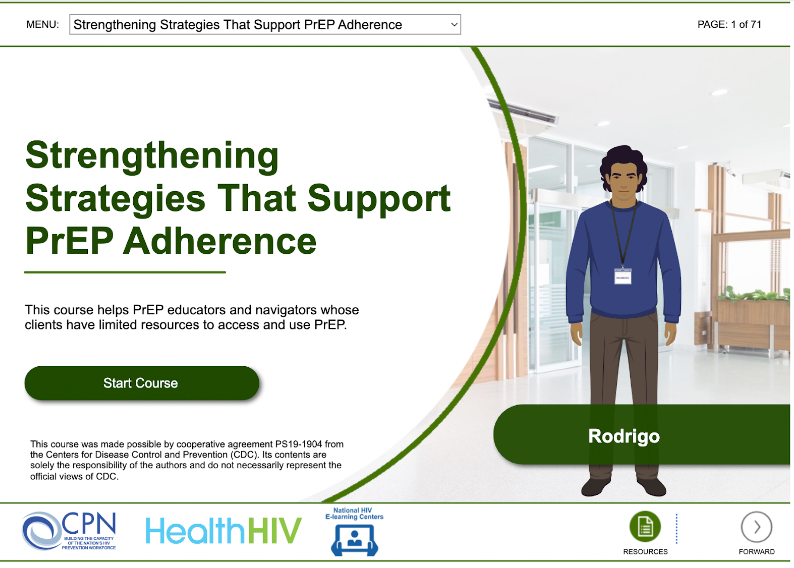
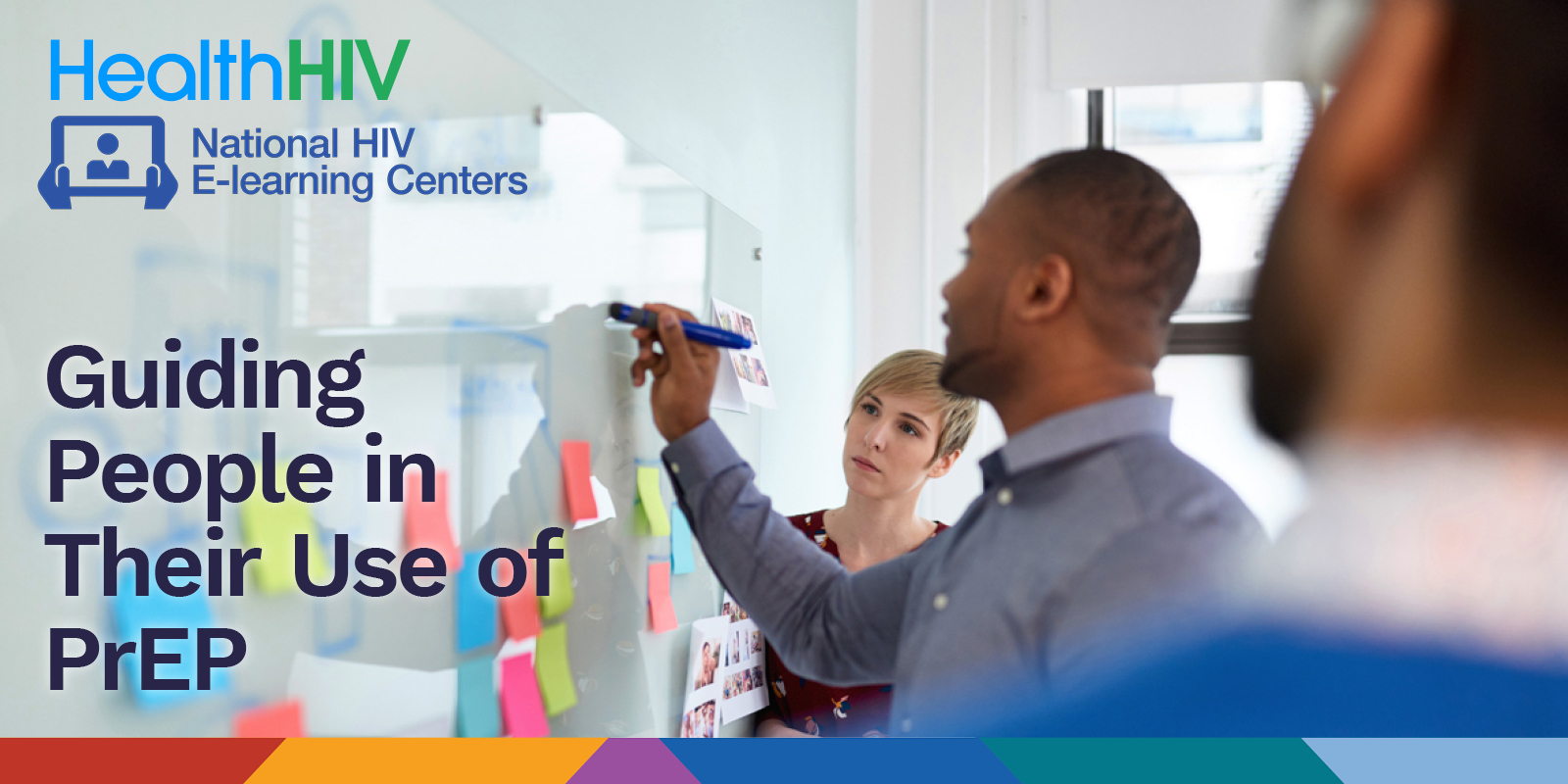
HealthHIV announces a new self-paced eLearning course, Guiding People in Their Use of PrEP. This course assists staff in community-based organizations, health departments, and other public health professions with knowledge and skills related to building awareness and engagement in PrEP and guiding clients to effectively use PrEP over time.
Through case scenarios, participants will be able to optimize clients’ uptake of and persistence to PrEP throughout their diverse journeys. Learners will identify eligible and suitable clients of PrEP through outreach, education, and testing efforts. A core part of the course covers how to find and effectively use currently available resources and information, including PleasePrEPMe, PrEPFacts, and others.
Intended Audiences
Client-facing staff who conduct community-based testing and linkage to care services, such as outreach, HIV education, partner services, and cluster response services, including frontline and management staff in health departments, community-based organizations, clinics, and clinical systems who implement HIV prevention with PrEP.
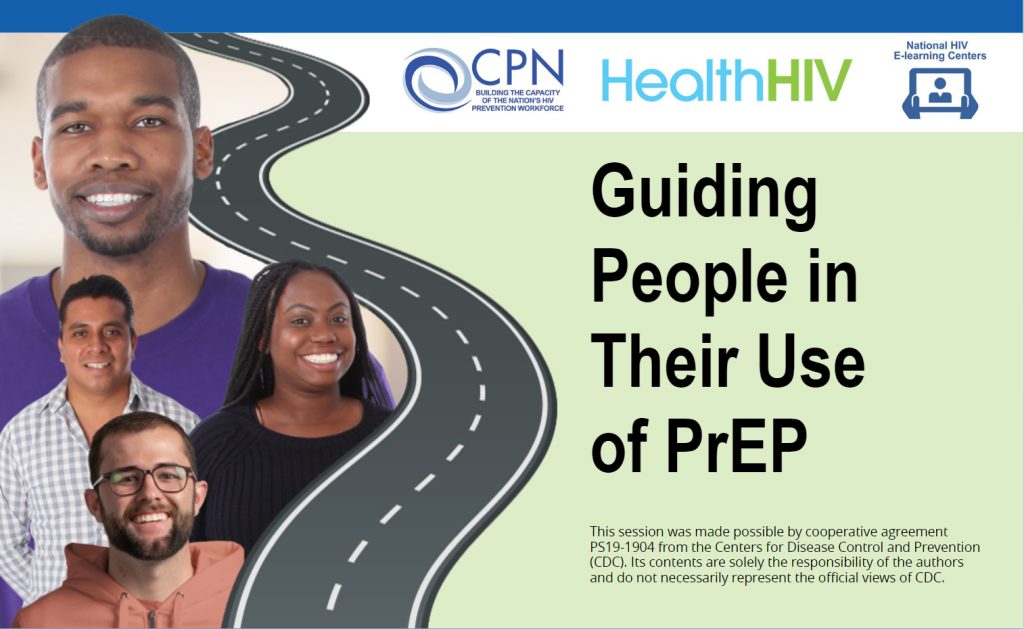

HealthHIV announces a new self-paced e-learning course, Introduction to Promoting PrEP Through Community-Led Campaigns. This course was created to provide health department staff, community-based organization staff, and other public health professionals with knowledge and skills related to designing, creating, and implementing a PrEP promotional campaign.
Learners will be able to understand the tasks involved in collecting and analyzing data on campaign audiences and to identify steps to include in a community-informed strategic plan. Learners also will be able to highlight parts of the design and application of community-specific messaging for a PrEP promotion and identify tasks for deploying a successful campaign. A core part of course content will involve creating a Campaign Blueprint that includes interactivity of case studies and strategies tailored to the learner’s specific situation.
Intended Audiences
Program administrators and others in health departments, clinics, and clinical systems who create, design, and guide community-led promotion campaigns and initiatives regarding PrEP and other HIV prevention interventions. The primary audience is the HIV prevention workforce funded by the Centers for Disease Control and Prevention to plan, design, and deliver HIV prevention services, including PrEP.
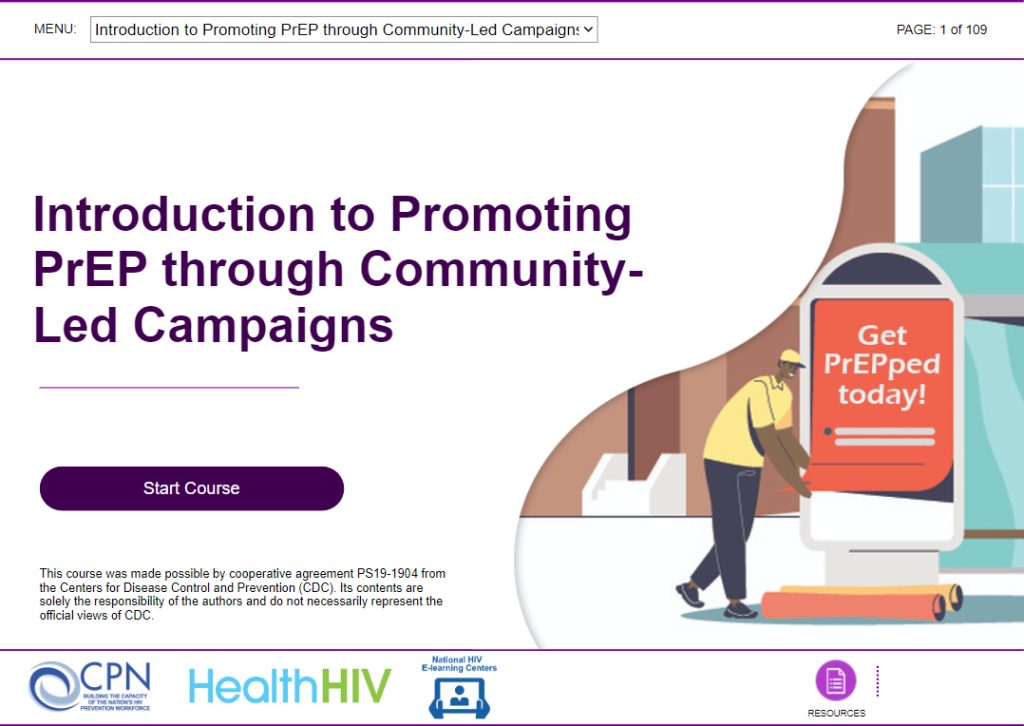
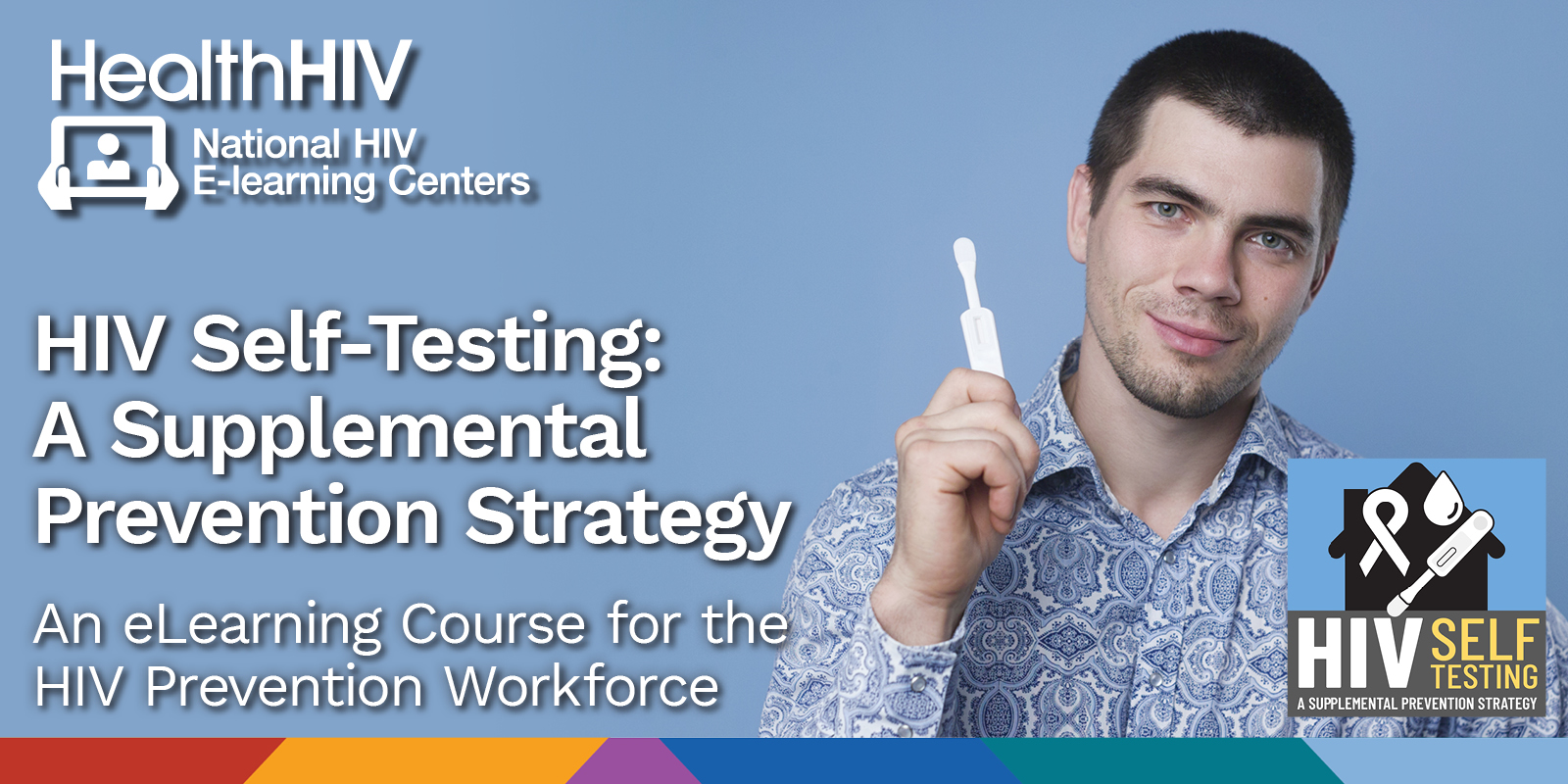
HIV Self-Testing is a supplemental strategy that supports Ending the HIV Epidemic in the U.S. In this 60-minute eLearning course, developed by HealthHIV, you will learn knowledge and skills to support the design, protocol development, and implementation of an HIV self-testing program. The course includes knowledge checks of the material covered and resources that you can use during and after taking the course.
By the end of this course, learners will be able to:
Intended Audiences
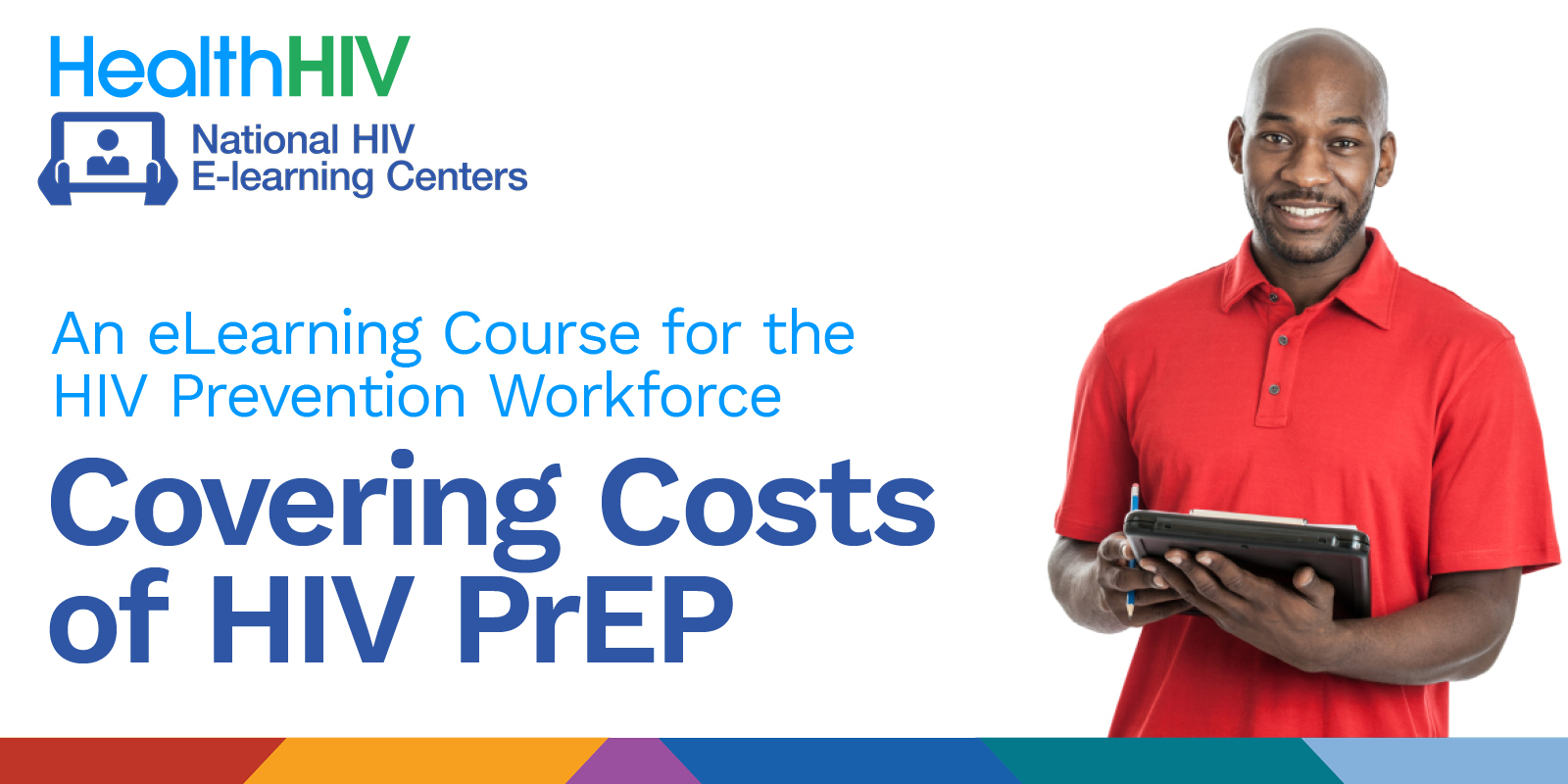
Clients considering PrEP may feel overwhelmed by trying to get PrEP within their health systems. PrEP educators and navigators may face their own challenges when explaining the costs of HIV PrEP and finding resources for handling those costs for these clients.
HealthHIV proudly announces a new 60-minute e-learning module, Covering Costs of HIV PrEP, created to help PrEP educators overcome these challenges through engaging and interactive activities, job aids, and scenarios. Participants have opportunities to reflect on how they can apply what they’ve learned to their current situations and can save their reflections for future reference as they grow their knowledge in the field.
The Capacity Building Assistance Provider Network (CPN) National HIV Classroom and eLearning Centers offers this course through funding from Centers for Disease Control and Prevention (CDC).
Background about this Course
During this self-paced e-learning module, participants will review three cost components of HIV PrEP, and sources of insurance, and other key tools that PrEP educators can use to help their clients cover those costs and evaluate different options for covering costs based on the needs of clients in various situations. Participants will reflect on how to discuss the costs of PrEP and how to use the covered tools and resources in their own organizations and with their own clients. This module will prepare participants for beginning their work as PrEP educators as well as serve as a refresher for experienced professionals.
This course is for a variety of HIV care providers in clinics and primary healthcare settings, including:
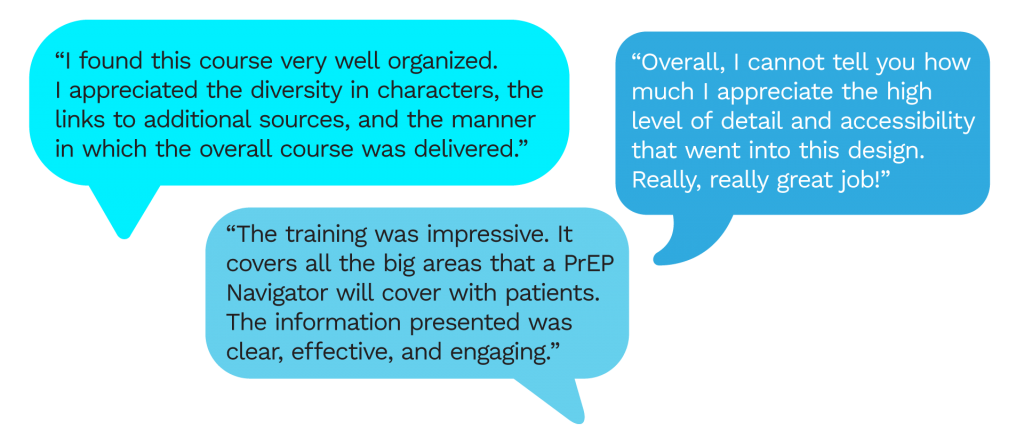
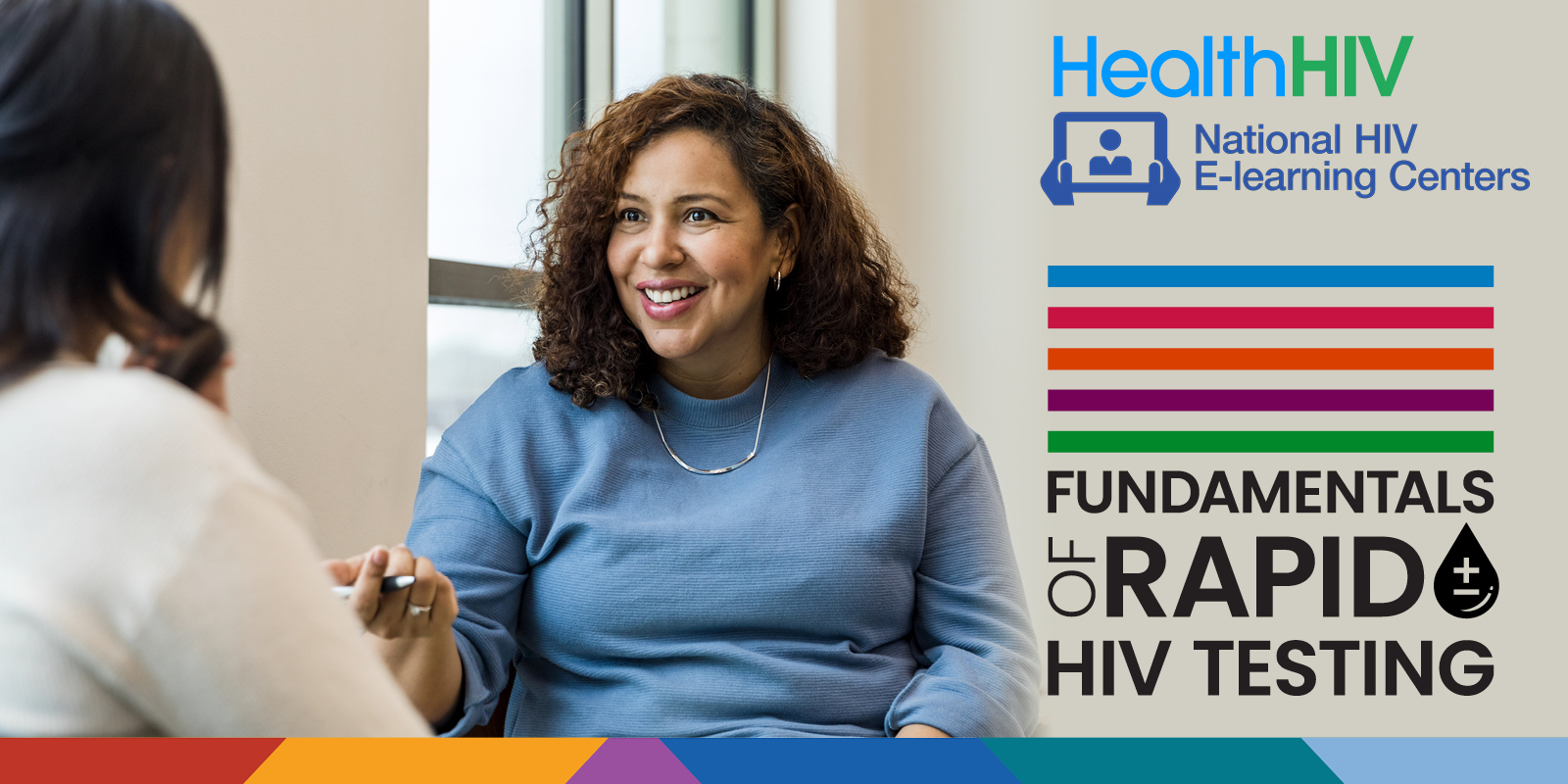
Rapid HIV Testing is a critical strategy for Ending the HIV Epidemic. This 5 module, 60-minute course is a foundational training for rapid HIV testing staff working in nonclinical community-based settings such as health departments, community-based organizations, and other nonclinical HIV testing sites. This course prepares rapid HIV testing staff to conduct the key steps of rapid HIV testing: setting up a workspace, conducting the rapid HIV test, preparing clients for the test and delivering test results, and conducting quality assurance activities. Participants also have opportunities to reflect on how they can use what they’ve learned and apply it to their current work. Learners may save their reflections for the future as they grow their knowledge in the field.
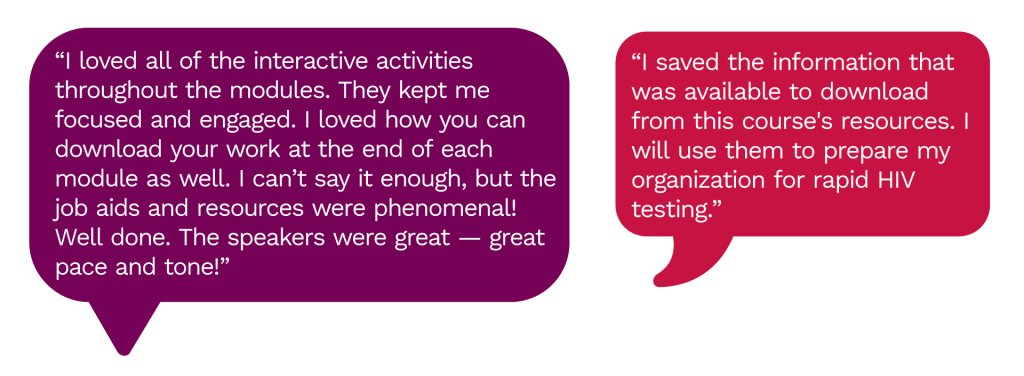
To register for the course, visit: https://www.train.org/main/course/1103747/compilation
If you don’t have a TRAIN account, visit this link to set up an account to access the course: Learner Instructions for HIV Capacity Building Assistance Learning Group on CDC TRAIN
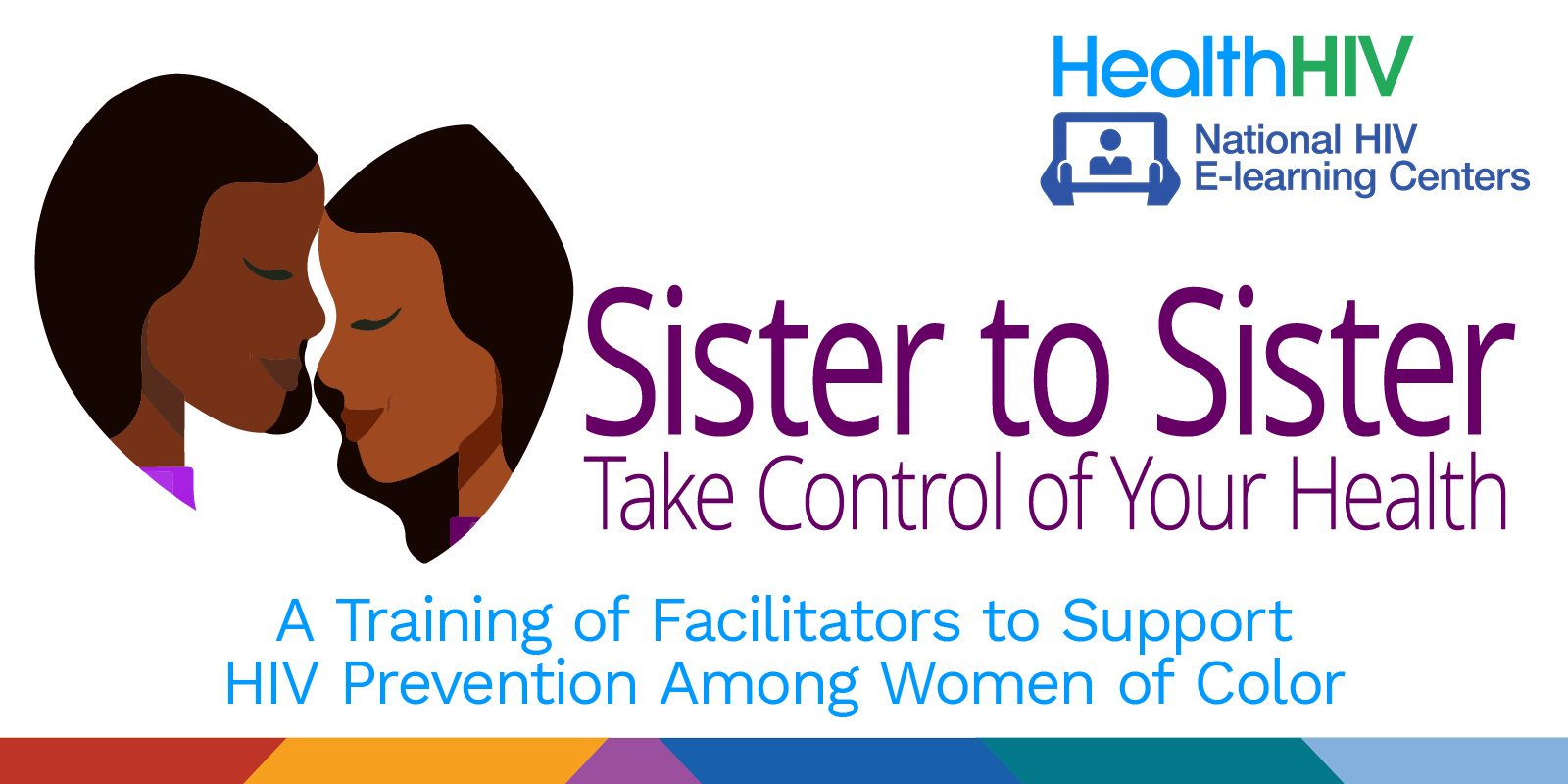
HealthHIV is pleased to announce the launch of Sister to Sister: Take Control of Your Health, a course developed for clinic-based providers to empower women to reduce their risk for acquiring HIV. This blended course entails a 60-minute, self-paced E-Learning module developed by HealthHIV, followed by an in-person or virtual classroom session hosted by CAI.
Sister to Sister: TCYH is an adaptation of the 1993 original intervention, Sister to Sister: Respect Yourself! Protect Yourself! Because You Are Worth It! This NEW, blended course offered by the Capacity Building Assistance Provider Network (CPN) National HIV Classroom and eLearning Centers is designed for clinic-based providers. The training of facilitators course includes an eLearning module; live, instructor-led virtual training; and course evaluation.
This course is for a variety of HIV care providers in clinics and primary health care settings including:
Background About This Intervention
Sister to Sister: TCYH is a one-on-one brief intervention between provider and patient that gives women the skills and information they need to reduce their risk of HIV. The intervention seeks to empower women to take control of their health by choosing PrEP and/or using condoms consistently to prevent HIV and uses CDC’s new #ShesWell campaign to help reinforce a variety of healthful messages. Providers seeking to implement Sister to Sister: TCYH at their sites can register for the Training of Facilitators, which includes two components:
Submit a request through the CBA Tracking System: https://wwwn.cdc.gov/CTS

All PS19-1904 grantees can request capacity building assistance (CBA):
For assistance with CTS, contact [email protected].
The E Cube logo represents the three essential elements of the National E-Learning Center: Extend, Enhance, and Engage.
Extend – the Center extends the training content of online learning nationwide to maximize accessibility and ensure that the HIV prevention workforce has the competencies and technical expertise critical to the foundation and operations of HIV prevention programs and services.
Enhance – the Center enhances blended-learning modality conducted by the national classroom, the regional technical assistance, and the continuous quality improvement and organizational sustainability providers by transitioning content to competency-based eLearning modules and serving as a centralized location to house eHealth materials and resources.
Engage – the Center engages the HIV prevention workforce, including non-traditional HIV prevention partners, by not only ensuring that individuals have the knowledge, skills, and competencies to achieve zero new infections, but that these newly acquired proficiencies align with strategic national goals and achieve HIV prevention performance excellence.
Contact HealthHIV’s Director of Health Systems Capacity Building, Marissa Tonelli, at [email protected]
HealthHIV’s National HIV eLearning Training Center is funded by the Centers for Disease Control and Prevention (CDC) to support PS19-1904: Capacity Building Assistance for High-Impact HIV Prevention Program Integration. The program is designed to support the proposed federal initiative, Ending the HIV Epidemic in the US, by improving and strengthening the capacity of the nation’s HIV prevention workforce.
© Copyright 2025 HealthHIV. All rights reserved.